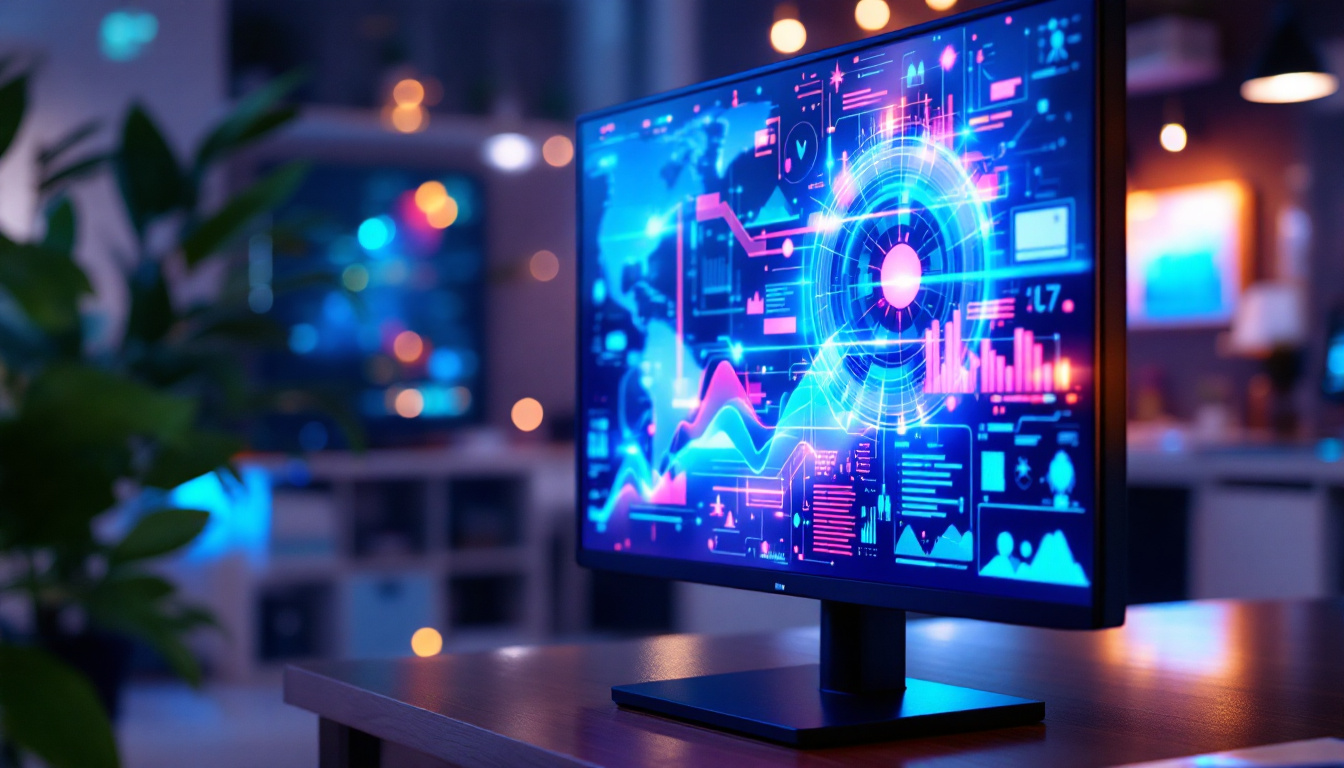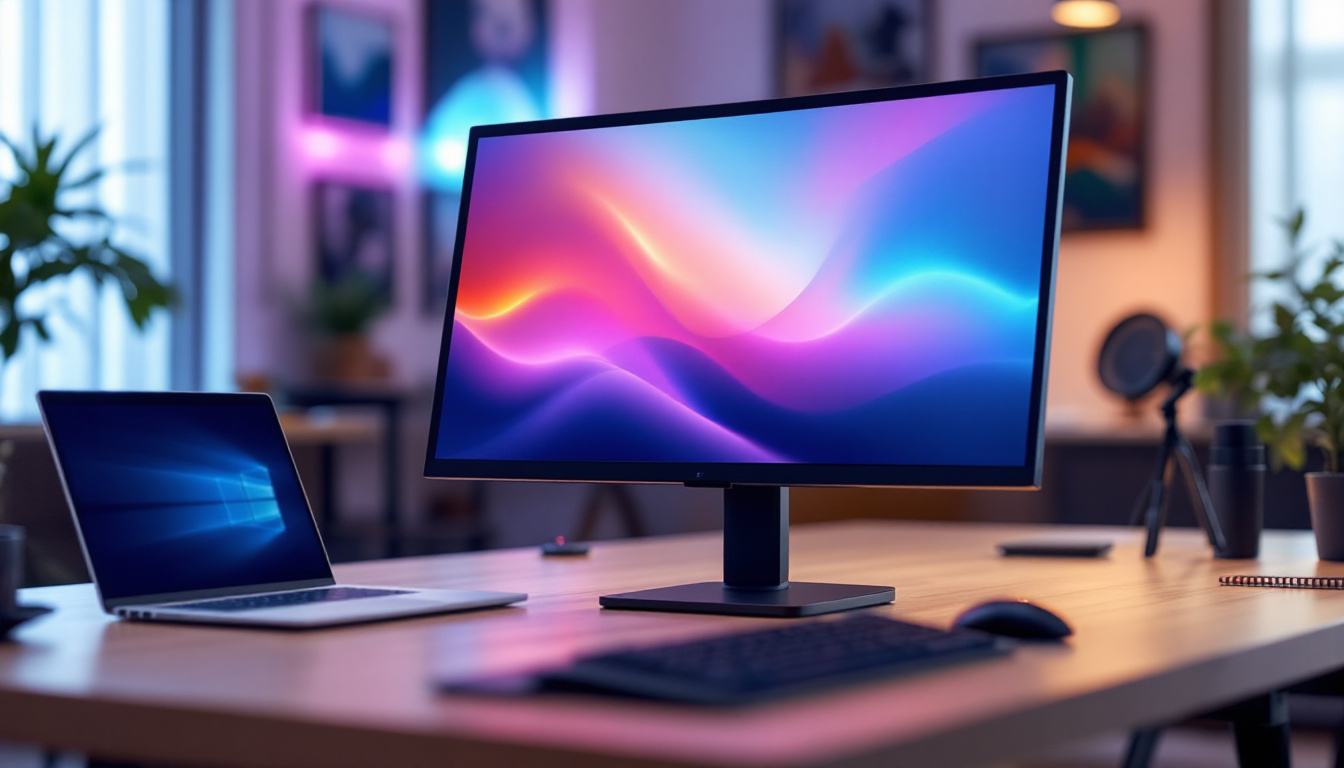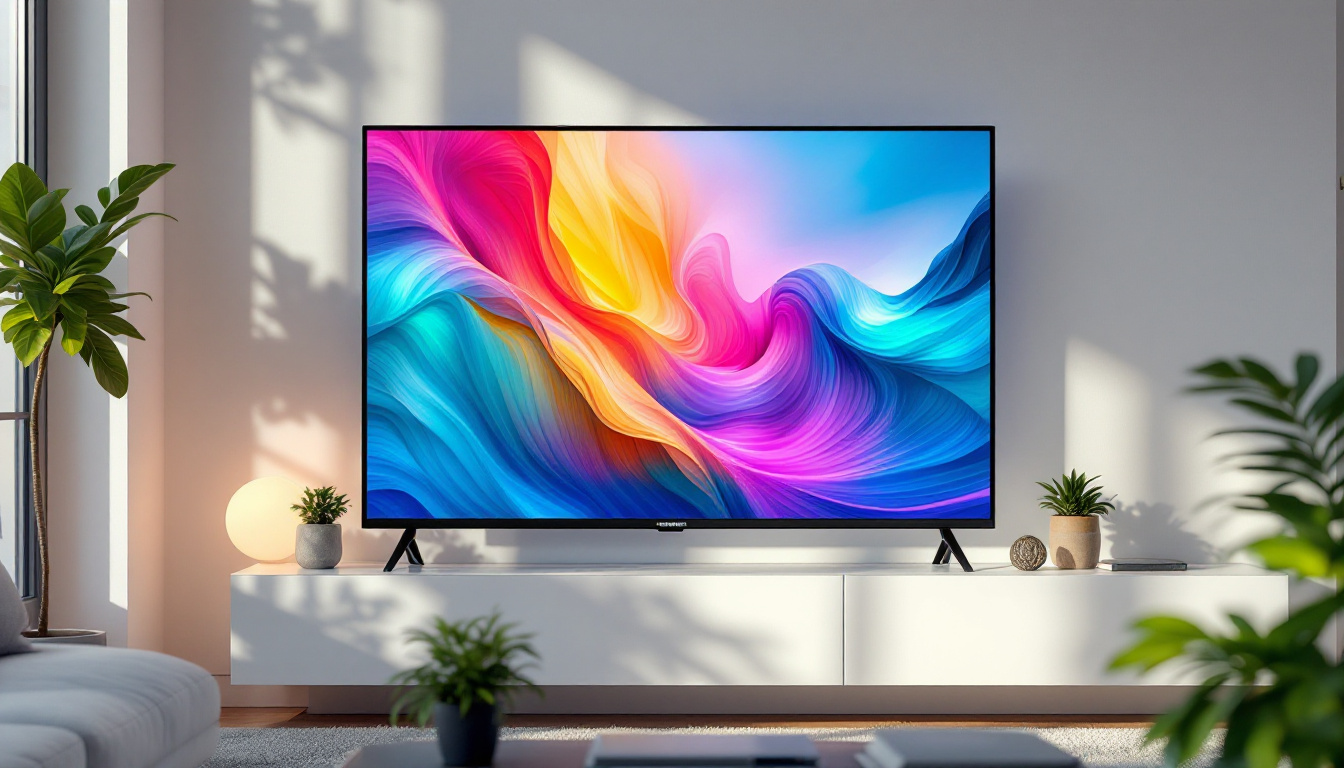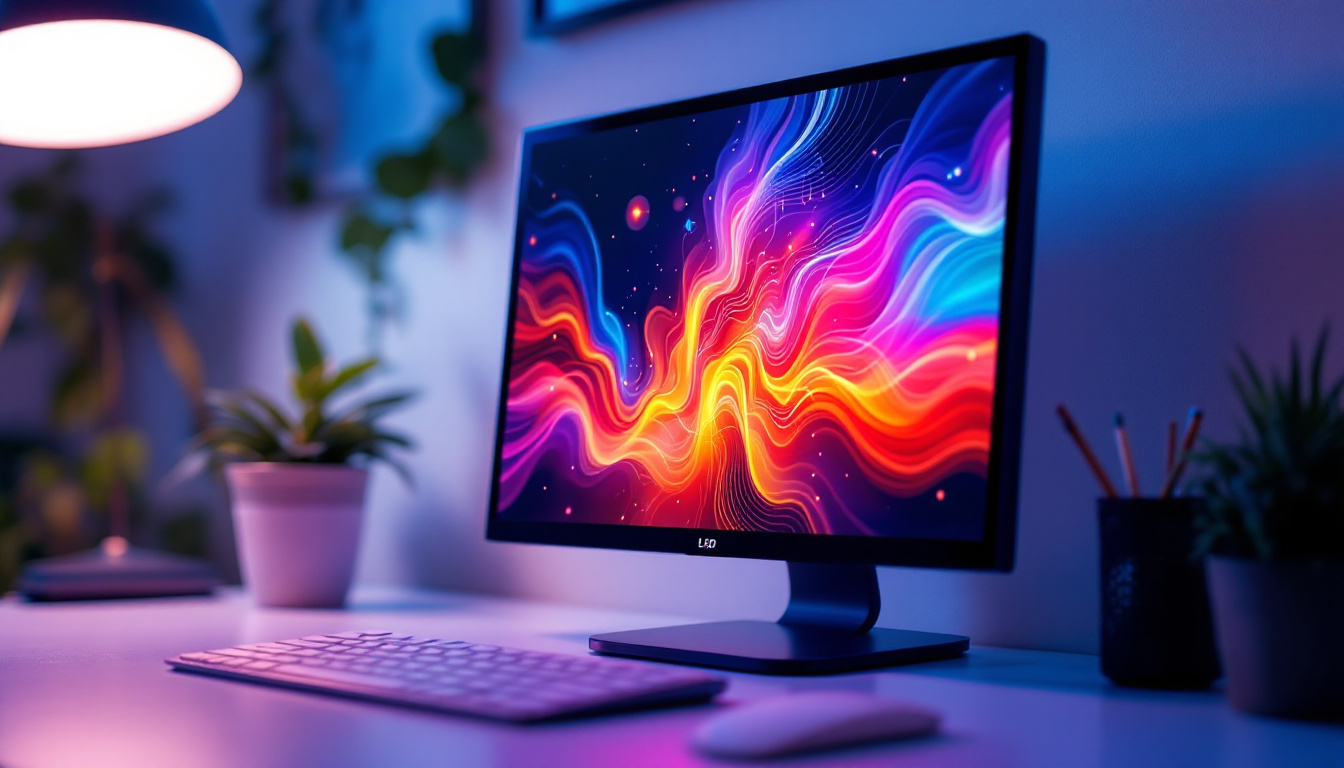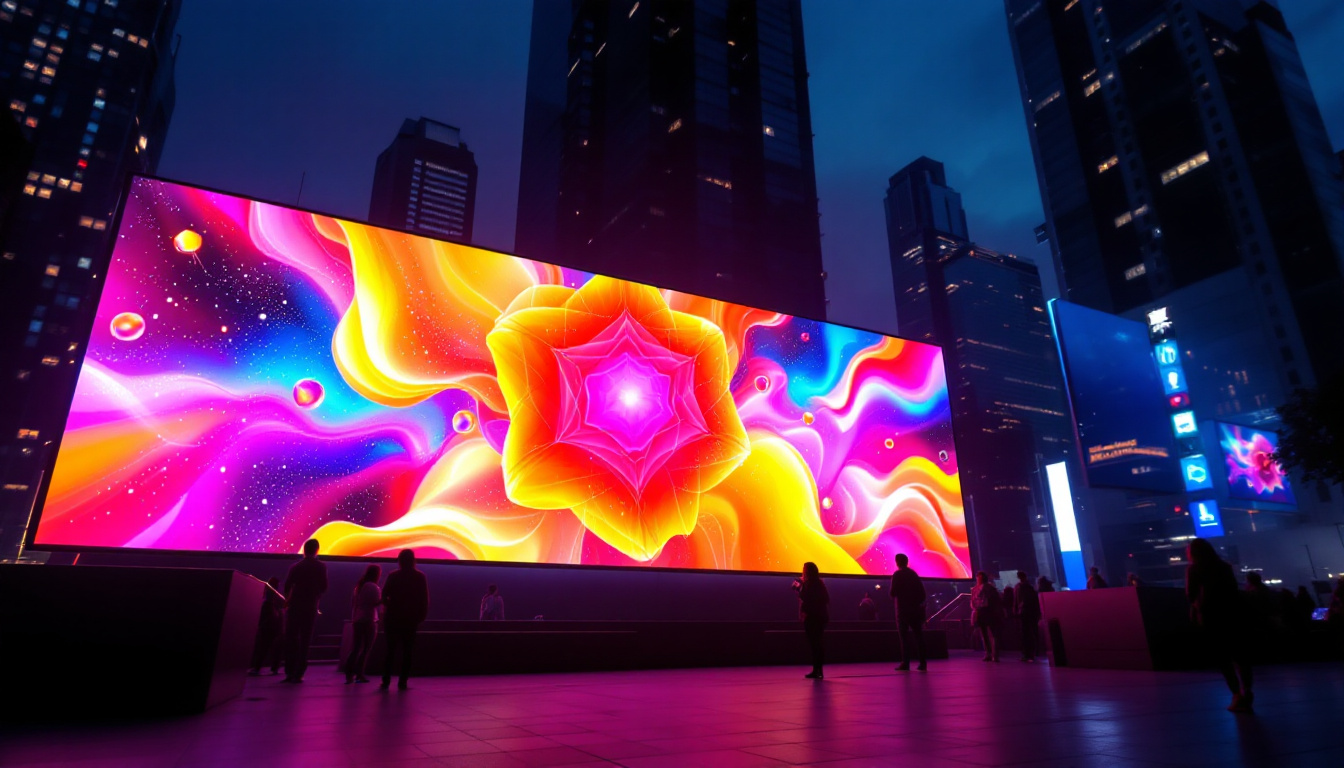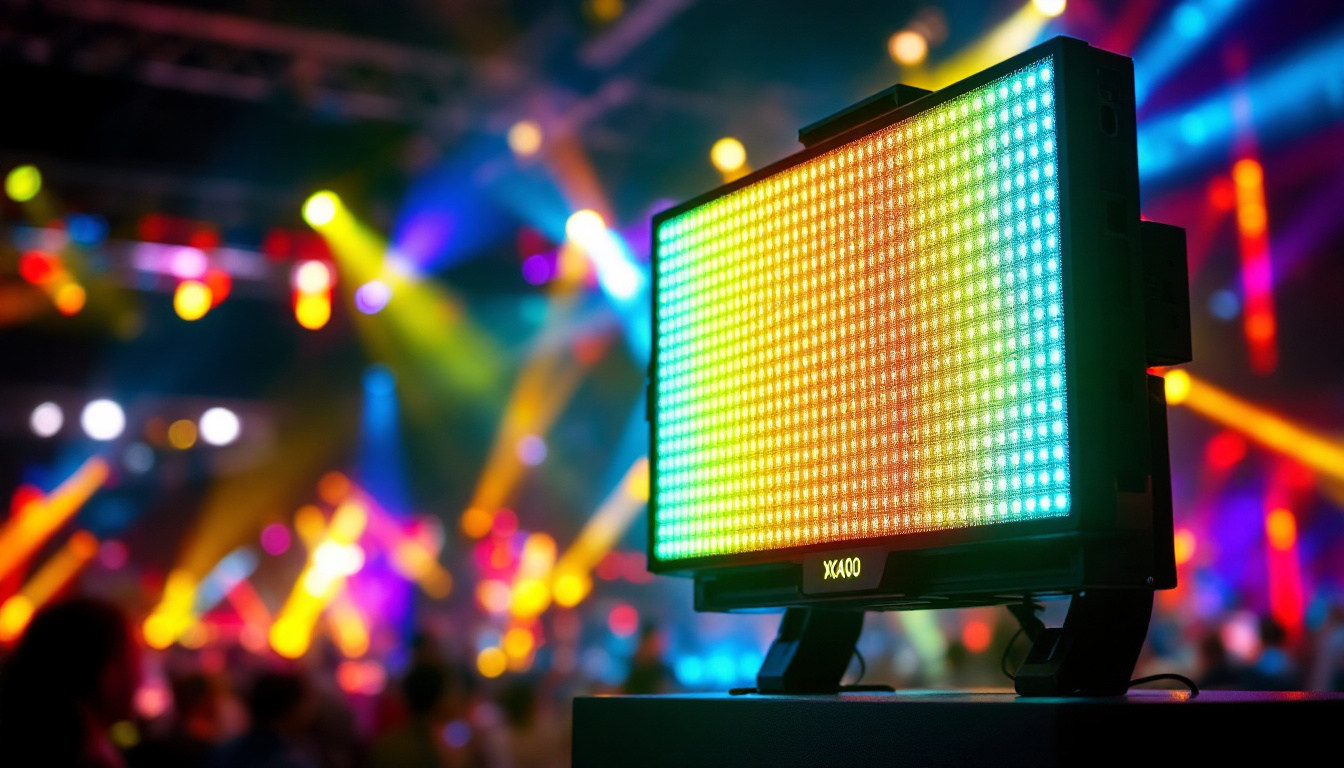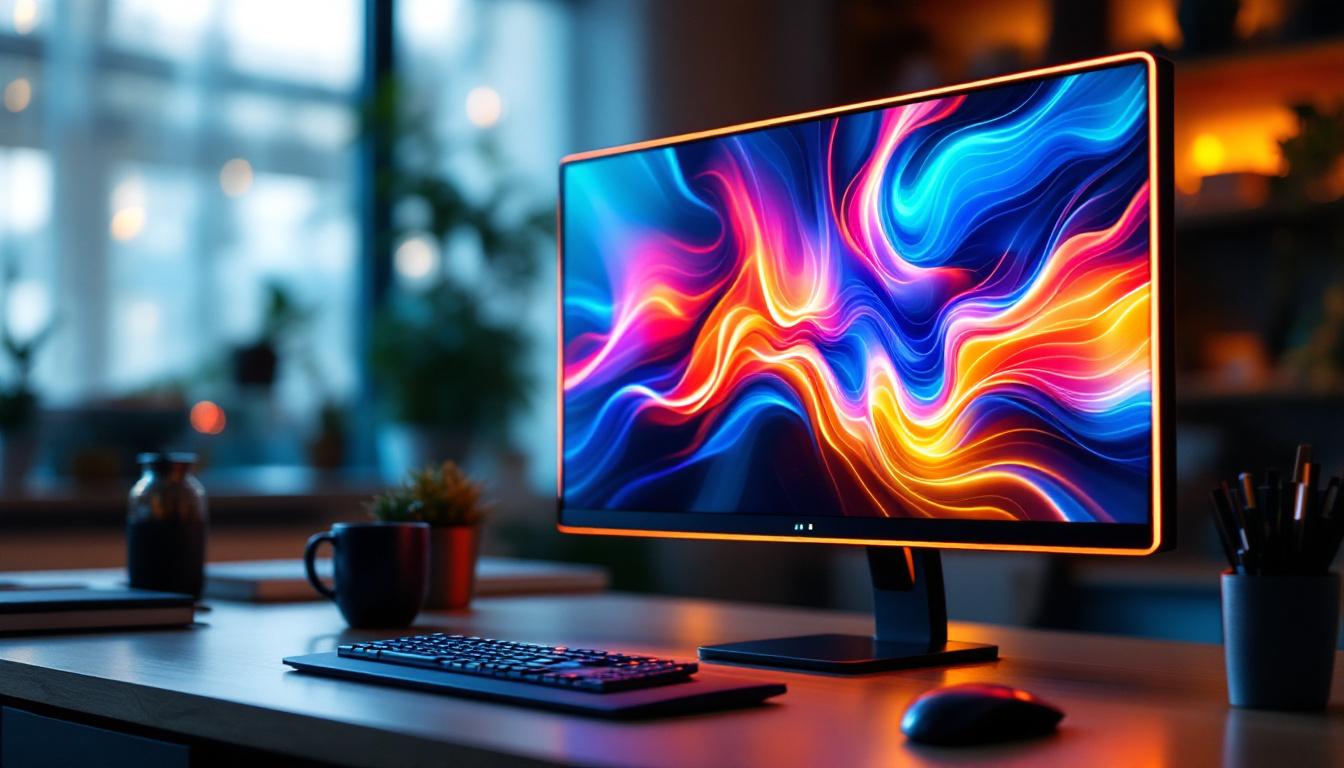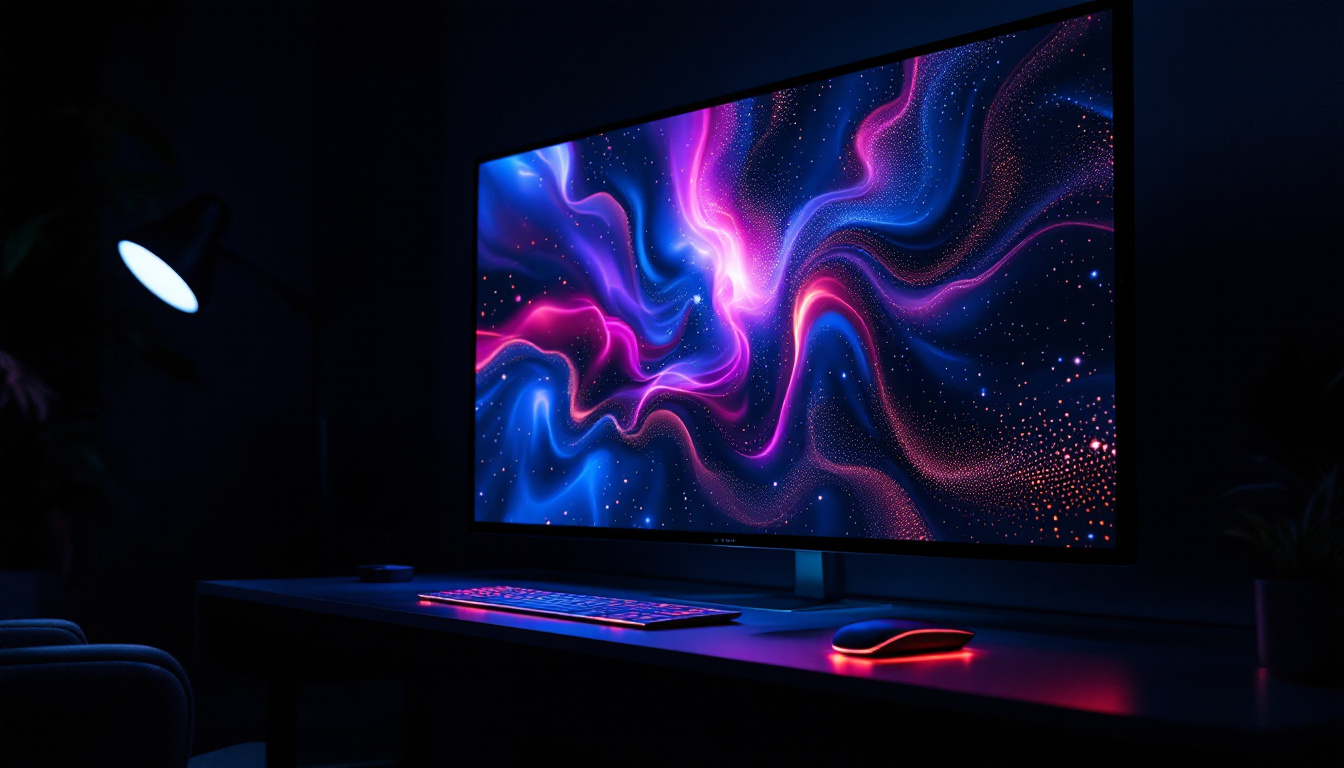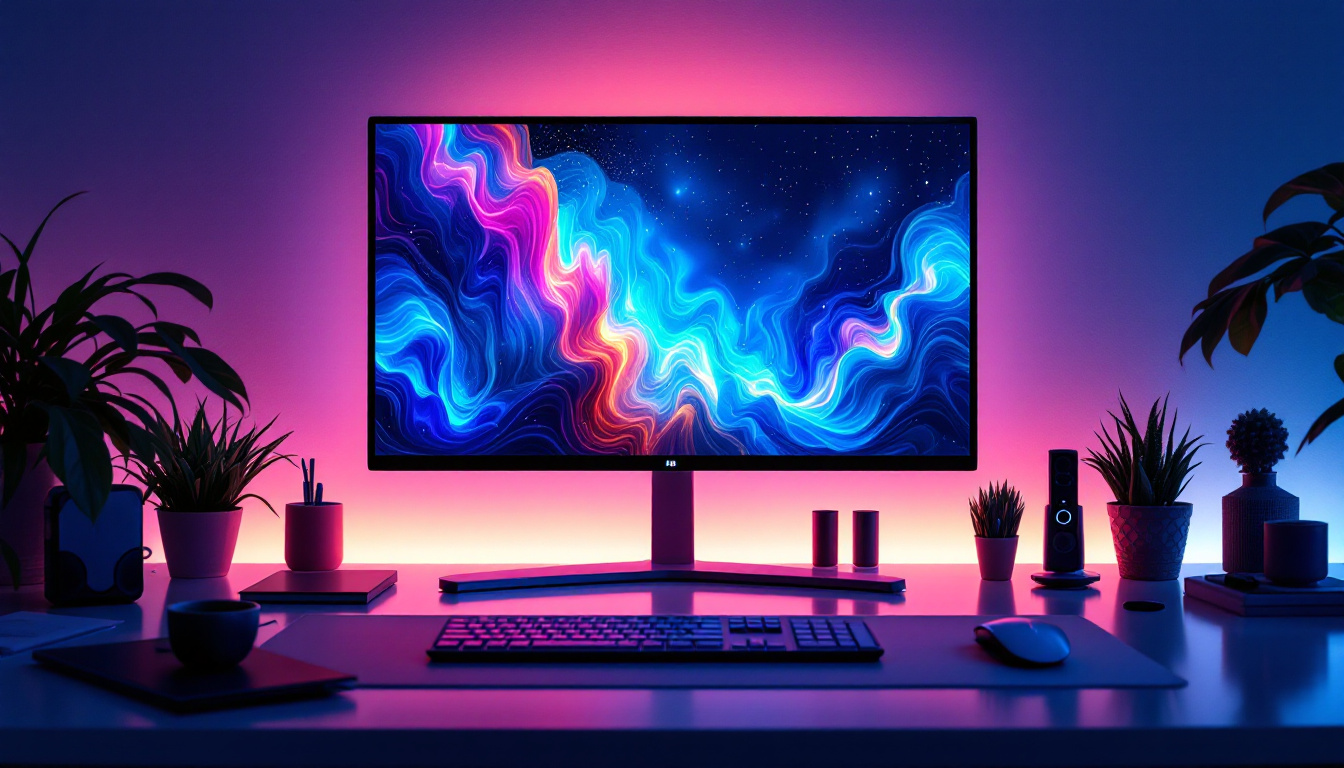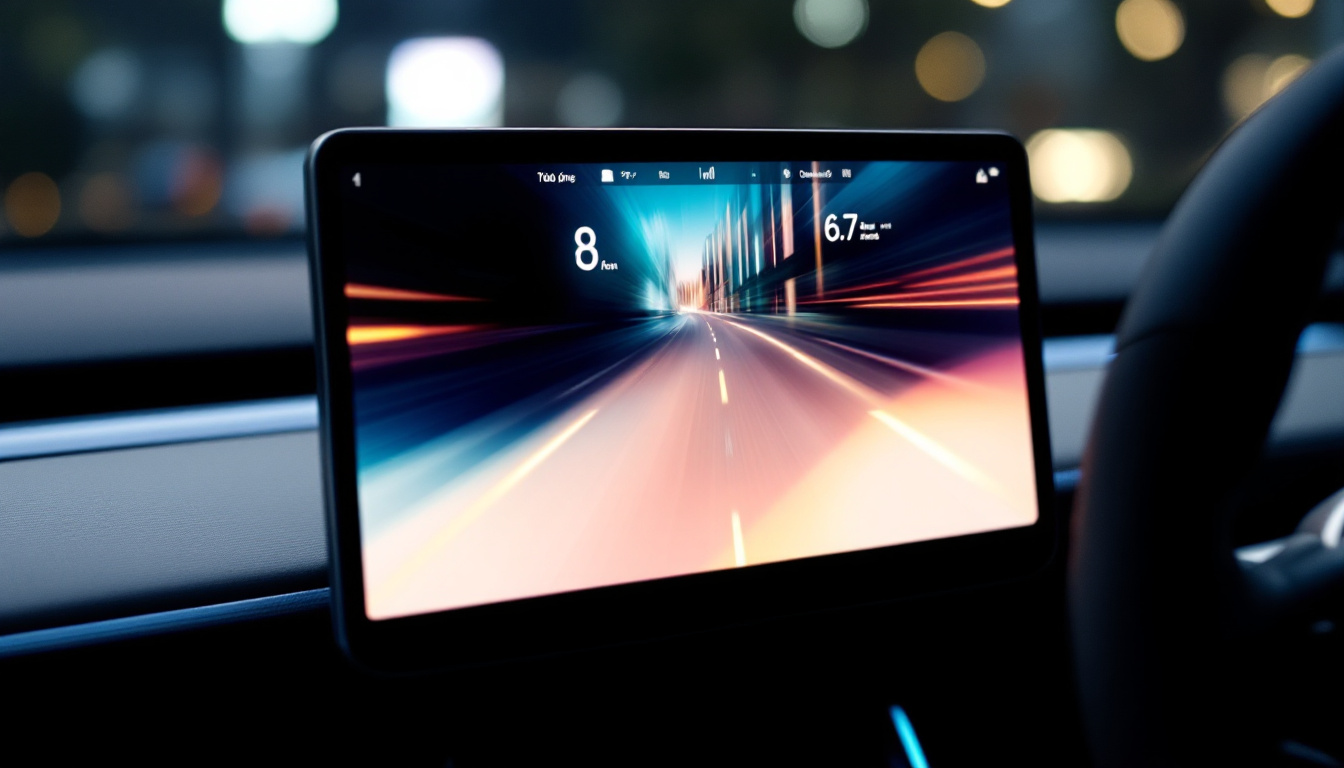The evolution of technology has transformed the way users interact with their computers. One of the most significant advancements in this realm is the introduction of touch screen monitors, particularly those equipped with LED displays. These devices not only enhance user experience but also offer a range of functionalities that cater to various professional and personal needs. This article delves into the intricacies of PC touch screen monitors with LED displays, exploring their features, benefits, and applications.
Understanding LED Technology
Light Emitting Diode (LED) technology has revolutionized the display industry, providing brighter, more vibrant images while consuming less power compared to traditional LCDs. LED displays utilize semiconductor diodes that emit light when an electric current passes through them. This technology is not only energy-efficient but also allows for thinner and lighter screens, making it ideal for touch screen monitors. The advent of LED technology has also paved the way for innovations in various fields, including automotive lighting, architectural illumination, and even horticulture, where specific light wavelengths can enhance plant growth.
Advantages of LED Displays
One of the primary advantages of LED displays is their superior brightness. This feature is particularly beneficial in environments with high ambient light, such as offices or public spaces. Additionally, LED displays offer a wider color gamut, resulting in more vivid and accurate colors. This is essential for graphic designers and video editors who rely on precise color representation. The longevity of LED displays is another notable advantage; they can last up to 50,000 hours or more, significantly reducing the need for frequent replacements and maintenance. This durability makes them a cost-effective solution over time, especially in commercial settings where displays are in constant use.
Another significant benefit is the improved contrast ratio. LED displays can achieve deeper blacks and brighter whites, enhancing the overall viewing experience. This is particularly noticeable when watching videos or playing games, where visual quality is paramount. Furthermore, many LED displays now incorporate advanced technologies such as HDR (High Dynamic Range), which further enhances the contrast and color accuracy, allowing viewers to experience a more immersive visual journey. The rapid response time of LED technology also minimizes motion blur, making it an excellent choice for fast-paced content like sports and action films.
Types of LED Displays
There are several types of LED displays available, each catering to different user needs. The most common types include Edge-lit LED, Direct-lit LED, and Full-array LED displays. Edge-lit LED displays are thinner and typically cheaper, as the LEDs are placed along the edges of the screen. Direct-lit LED displays, on the other hand, have LEDs positioned behind the screen, providing more uniform brightness. Full-array LED displays offer the best performance, featuring a grid of LEDs that can be individually controlled for optimal contrast and color accuracy. Additionally, there are OLED (Organic Light Emitting Diode) displays, which, while technically different from traditional LED displays, utilize similar principles and offer even greater contrast and color depth due to their ability to turn off individual pixels completely.
Moreover, the rise of MicroLED technology has begun to make waves in the industry, promising even higher brightness levels and improved energy efficiency. MicroLED displays consist of tiny, self-emitting pixels that can be arranged in various configurations, allowing for flexible and scalable display sizes. This innovation not only enhances the viewing experience but also opens up new possibilities for creative applications, such as curved or modular displays that can adapt to different environments and user preferences. As LED technology continues to evolve, the potential for new applications and improvements in display quality seems limitless.
Touch Screen Technology: An Overview
Touch screen technology has become an integral part of modern computing, allowing users to interact with their devices through direct touch. This technology can be divided into several categories, including resistive, capacitive, and optical touch screens. Each type has its unique characteristics and applications, making them suitable for different environments and user needs.
Resistive Touch Screens
Resistive touch screens consist of two flexible layers separated by a small gap. When pressure is applied to the screen, the two layers make contact, registering the touch. This type of touch screen is known for its durability and ability to work with any pointing device, including fingers, styluses, or gloves. However, resistive screens typically have lower clarity and brightness compared to their capacitive counterparts.
Capacitive Touch Screens
Capacitive touch screens utilize the electrical properties of the human body to register touch. When a finger touches the screen, it disrupts the electrostatic field, allowing the device to detect the location of the touch. This technology offers superior clarity, brightness, and multi-touch capabilities, making it the preferred choice for smartphones and tablets. Capacitive screens are generally more responsive and provide a smoother user experience.
Benefits of PC Touch Screen Monitors
PC touch screen monitors combine the advantages of LED display technology with the convenience of touch interaction. This combination offers numerous benefits that enhance productivity and user experience in various settings.
Enhanced User Interaction
Touch screen monitors facilitate a more intuitive interaction with software applications. Users can navigate through menus, zoom in and out, and manipulate objects with simple gestures, reducing the reliance on traditional input devices such as mice and keyboards. This is particularly beneficial in environments where quick access to information is essential, such as in retail or hospitality settings.
Space Efficiency
In many cases, touch screen monitors can replace multiple devices, combining the functionalities of a monitor, keyboard, and mouse into a single unit. This space-saving feature is particularly advantageous in small offices or workspaces where maximizing available space is crucial. Additionally, the sleek design of many touch screen monitors contributes to a modern aesthetic, enhancing the overall appearance of the workspace.
Applications of Touch Screen Monitors
The versatility of touch screen monitors makes them suitable for a wide range of applications across various industries. From healthcare to education, these devices are transforming how tasks are performed and how information is accessed.
Healthcare
In the healthcare sector, touch screen monitors are increasingly being used for patient management systems, allowing healthcare professionals to access patient records quickly and efficiently. The intuitive interface enables doctors and nurses to input data, view medical histories, and even conduct telemedicine consultations with ease. This not only improves workflow efficiency but also enhances patient care.
Education
Touch screen monitors are becoming a staple in classrooms, offering interactive learning experiences for students. Teachers can use these devices to present lessons, engage students in group activities, and facilitate collaborative projects. The ability to annotate directly on the screen encourages active participation, making learning more engaging and effective.
Retail and Hospitality
In retail and hospitality settings, touch screen monitors are utilized for point-of-sale systems, self-service kiosks, and digital signage. Customers can easily browse products, place orders, and make payments, streamlining the purchasing process. This not only enhances customer satisfaction but also reduces wait times, ultimately boosting sales and efficiency for businesses.
Choosing the Right Touch Screen Monitor
When selecting a touch screen monitor, several factors should be considered to ensure it meets specific needs and requirements. Understanding the various features and specifications available can aid in making an informed decision.
Screen Size and Resolution
The size and resolution of the touch screen monitor are critical factors that can impact user experience. Larger screens provide more space for multitasking and can enhance visibility in collaborative settings. Resolution is equally important, as higher resolutions result in clearer images and sharper text, which is essential for tasks that require precision.
Touch Technology
As previously mentioned, the type of touch technology—resistive or capacitive—plays a significant role in the monitor’s performance. Capacitive touch screens are generally preferred for their responsiveness and clarity, but resistive screens may be more suitable for environments where durability is a priority, such as industrial settings.
Connectivity Options
Connectivity options are another critical consideration. Most touch screen monitors come with multiple input options, including HDMI, USB, and DisplayPort. Ensuring compatibility with existing devices is essential for seamless integration. Additionally, some monitors offer built-in Wi-Fi or Bluetooth capabilities, enabling wireless connectivity and further enhancing functionality.
Future Trends in Touch Screen Technology
The future of touch screen technology is promising, with ongoing advancements that aim to enhance user experience and broaden applications. Emerging trends are likely to shape the landscape of touch screen monitors in the coming years.
Gesture Recognition
Gesture recognition technology is on the rise, allowing users to control devices through hand movements rather than direct touch. This innovation could lead to more hygienic interactions, particularly in public spaces where minimizing contact is essential. As this technology continues to develop, it may become a standard feature in touch screen monitors.
Augmented Reality Integration
Augmented reality (AR) is another area of growth that could significantly impact touch screen monitors. By integrating AR capabilities, users could interact with digital information overlaid on the real world, enhancing applications in fields such as education, training, and design. This could lead to more immersive experiences and innovative ways to visualize data.
Conclusion
PC touch screen monitors with LED displays represent a significant advancement in technology, offering enhanced user interaction, energy efficiency, and vibrant visuals. Their versatility makes them suitable for a wide range of applications across various industries, from healthcare to education and retail. As technology continues to evolve, the future of touch screen monitors looks promising, with innovations such as gesture recognition and augmented reality on the horizon. Investing in a quality touch screen monitor can greatly enhance productivity and user experience, making it a valuable addition to any workspace.
Discover the Future of Visual Engagement with LumenMatrix
Ready to elevate your interactive experiences with the latest in LED display technology? LumenMatrix is at the forefront of innovation, offering a diverse range of LED display solutions tailored to meet your unique needs. From captivating Indoor and Outdoor LED Wall Displays to dynamic Vehicle and Sports LED Displays, our products are designed to make your brand stand out. Embrace the future with our cutting-edge Floor, Custom, and All-in-One LED Displays, including the transformative LED Transparent Display. Experience the power of enhanced engagement and clear, impactful communication. Check out LumenMatrix LED Display Solutions today and see your vision come to life.

